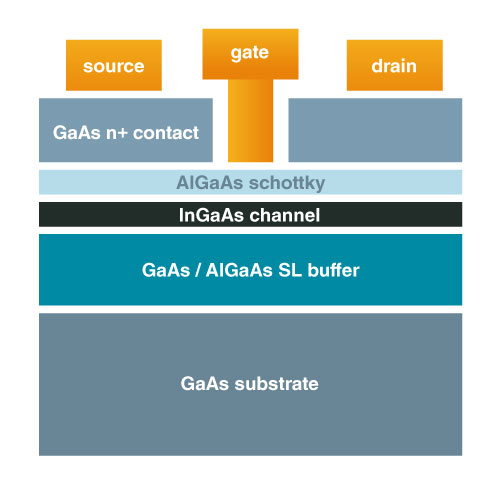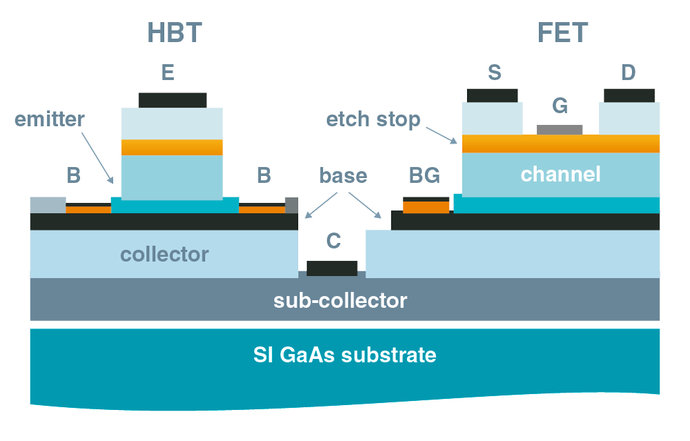With proper choice of materials, the barrier for this electron injection is significantly lower than the barrier for backward injection of holes from the base into the emitter. Electron transport can be further improved by compositionally grading the base region. The band gap diagram below shows both the wide gap emitter and the graded base. The lightly shaded areas are the depleted regions in both junctions.
HBT structures can be grown using either MOCVD or MBE epitaxy, although the majority are currently made using MOCVD. For many years, the wide gap emitter material of choice was AlGaAs, but most recent HBTs use InGaP. The presence of Phosphorus also strongly pushes the epiaxy technology toward MOCVD. The structure is grown, starting with an N-type subcollector acting as a buffer layer.



